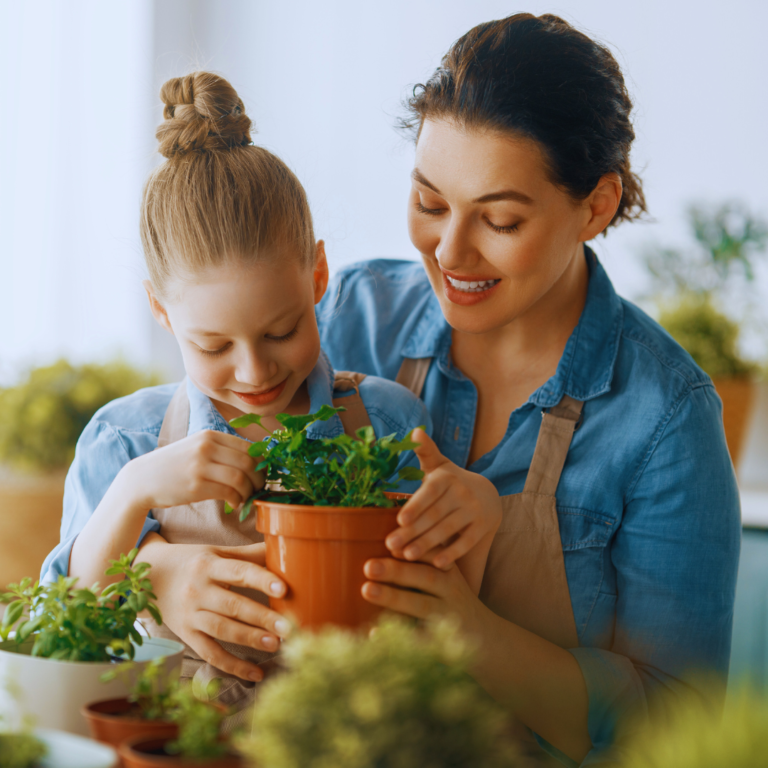
Many individuals are eager to start their gardening journey but often feel overwhelmed by the choices available. The best plants for beginner gardeners are hardy, low-maintenance varieties that thrive in various conditions. Selecting the right plants can make the difference between a flourishing garden and a frustrating experience.
Succulents, herbs, and certain flowers easily adapt and require minimal care, making them perfect for novices. These plants not only beautify a space but also boost confidence in gardening skills. Starting with these manageable options allows new gardeners to enjoy the process without the fear of failure.
With the right plant selections, anyone can cultivate a vibrant garden and learn valuable skills along the way. Beginner gardeners can find joy in watching their plants grow and succeed in nurturing life.
Selecting the Right Plants
Choosing the right plants is essential for a successful gardening experience. This involves understanding which vegetables and flowers are suitable for beginners, as well as knowing the differences between perennials and annuals.
Easy-to-Grow Vegetables
Beginners should consider vegetables like radishes, peas, and leaf lettuce. These crops germinate quickly and thrive in full sun with well-drained soil.
- Radishes: They mature in just 3-4 weeks. They require minimal care and can be sown directly into the soil.
- Peas: Particularly climbing peas, they are easy to grow and can be harvested in early summer. They benefit from trellising for better growth.
- Lettuce: Leaf lettuce grows rapidly and can be repeatedly harvested for fresh salads.
These options provide quick results and can build confidence in new gardeners.
Foolproof Flowers for the Beginning Gardener
Marigolds, zinnias, and cosmos are excellent flower choices for novice gardeners. These blooms not only add color but are also hardy and low-maintenance.
- Marigolds: Known for their pest-repelling properties, they thrive in poor soil and can withstand drought.
- Zinnias: Available in diverse colors, they grow well in full sun and attract pollinators like bees and butterflies.
- Cosmos: Resilient and adaptable, they require little water once established.
These flowers are forgiving and provide visual appeal with little effort.
Perennials vs. Annuals: A Primer
Understanding the difference between perennials and annuals is key.
- Perennials: These plants come back year after year, making them a wise choice for long-term gardens. Examples include coneflowers and daylilies.
- Annuals: They complete their life cycle in one season. Marigolds and zinnias fall into this category.
Beginners can opt for a combination of both to enjoy continuous blooms while establishing a foundation for future gardening endeavors. Each type has its advantages, depending on the desired gardening experience.
Fundamentals of Plant Care
Understanding basic plant care is essential for any beginner gardener. Key aspects include proper watering techniques, knowledge of soil and sunlight requirements, and awareness of seasonal effects on plant health.
Watering Best Practices
Regular, adequate watering is vital for plant health. Each plant has specific needs based on its type, so knowing how much water to provide is crucial.
- Frequency: Most plants thrive with watering once a week. However, some might require more or less, depending on their environment.
- Method: Watering at the soil level prevents mold and mildew that can develop on leaves. Using a watering can or soaker hose allows for focused distribution.
Signs of under- or over-watering include yellowing leaves or wilting, which should be addressed promptly to maintain plant health.
Understanding Soil and Sunlight
Soil quality significantly influences plant growth. Well-drained soil helps to avoid root rot, while soil temperature affects nutrient availability.
- Types of Soil: Utilize loamy soil for most plants; it retains moisture yet allows excess water to drain. Amend poor soil types with compost to enhance fertility.
- Sunlight Needs: Different plants have varying sunlight requirements. Full sun (6-8 hours of direct light) suits many vegetables and herbs. Shade-loving plants thrive in 3-5 hours of indirect light.
Regularly assess soil moisture by inserting a finger into the soil; if it feels dry an inch down, it’s time to water.
Seasonal Considerations for Plant Growth
Recognizing how seasons affect plant growth is essential for success. Each season brings specific challenges and care requirements.
- Spring: This is a time of growth as temperatures rise. Plants need more water and nutrients.
- Summer: Higher temperatures may lead to increased evaporation. Watering may need to be more frequent.
- Fall: As temperatures drop, many plants enter a dormancy phase. Reduce watering, but monitor for late-season growth.
Winter presents challenges, as soil temperature may drop significantly. Consider indoor options or protective measures for outdoor plants during cold months.
Planning Your Garden Layout
A well-thought-out garden layout can enhance productivity and aesthetics. By strategically organizing plant varieties and planning for staggered harvests, a gardener can maximize yields and enjoyment throughout the growing season.
Maximizing Space with Vegetable Varieties
Using vertical gardening techniques can significantly save space. For instance, cucumbers and bush beans thrive on trellises, allowing for more ground space. Pairing taller plants, like tomatoes and corn, with shorter ones, such as carrots and kale, creates a productive interplay across all height levels.
Consider companion planting: for example, summer squash and peppers can coexist, benefiting from each other’s growth conditions and minimizing potential pest problems. This method fosters an ecosystem that supports healthy plants while maximizing garden space efficiently.
Creating a Continuous Harvest Schedule
To maintain a steady supply of fresh produce, stagger planting times. For instance, sow bush beans every two weeks for a continuous crop throughout summer. This principle applies to carrots and kale, which can be sown successively to extend the harvest period.
Incorporating a mix of quick-growing vegetables, such as radishes, alongside slower-growing varieties allows for earlier harvesting while waiting for longer-maturing crops like eggplants and tomatoes. This approach ensures that the garden remains productive, addressing both short-term needs and long-term goals.
Incorporating Flowers for Aesthetic and Function
Integrating flowers into the vegetable garden serves both aesthetic and functional purposes. Marigolds can deter pests while attracting beneficial insects, thus promoting pollination. Their vibrant colors enhance the visual appeal of the garden, creating a more enjoyable environment.
Adding flowers also provides contrast to leafy greens, such as kale, enriching the garden’s overall texture. Opt for companion flowers like nasturtiums, which can attract pollinators and serve as a trap crop for aphids, further protecting valuable vegetables like tomatoes and peppers from pests.
Plant Maintenance and Growth Tips
Proper plant maintenance is essential for success in gardening. Key practices include cultivating healthy soil, employing seasonal techniques, and managing pests effectively.
Cultivating Healthy Soil
Healthy plants begin with quality soil. Well-drained soil is crucial for preventing root rot and allowing airflow. Adding organic matter like compost enriches the soil, providing essential nutrients.
For gardeners planning a lawn or looking to improve overall soil structure, professional turf installation can tie these practices together by ensuring proper grading, drainage, and soil contact for new sod. In Florida’s climate, establishing the right irrigation balance and choosing varieties that tolerate local conditions helps reduce maintenance and runoff.
Homeowners integrating vegetable beds and ornamental plantings often benefit from regional expertise; consider sod installation in Tampa Bay for practical, site-specific guidance on drainage and turf selection. Thoughtful installation complements compost and mulch practices, producing a healthier, longer-lasting landscape.
Also, regularly test soil pH to ensure it is balanced for optimal plant growth. Most flowers and herbs, such as basil and rosemary, thrive in slightly acidic to neutral soil (pH 6.0 – 7.0).
Incorporate mulch around plants to retain moisture and suppress weeds. This practice not only conserves water but also regulates soil temperature, creating a stable environment for growth.
Pest Management for Beginners
Pest control with the help of a reputable pest control company near Richmond (provided that’s where you reside) is vital for maintaining plant health. Als regularly inspect plants for signs of pests, such as holes in leaves or sticky residue.
Introduce beneficial insects like ladybugs to help control pest populations naturally. Insecticidal soap can be effective against softer-bodied pests without harming beneficial insects.
A simple solution for minor infestations includes a mixture of water and mild soap sprayed directly onto affected areas. Always follow instructions on products to ensure safe application.
However, if pest issues persist or become difficult to manage, then professional help might be necessary. For example, if a beehive is discovered in a garden, it can be beneficial to look up something like “honeybee removal near me” in order to find professionals who can safely remove the colony while protecting surrounding plants and maintaining a healthy garden environment.
Seasonal Gardening Techniques
Seasonal adjustments can maximize growth. Spring is ideal for planting herbs and flowers. For continuous harvest, stagger planting times.
Monitor irrigation needs based on the season. Regular watering is key. Aim for about 1 inch of water per week, adjusting as necessary for rainfall and temperature changes.
In summer, consider providing shade for sensitive plants to avoid scorching. As fall approaches, prepare for winter by cleaning up dead foliage, which can harbor pests and diseases.
